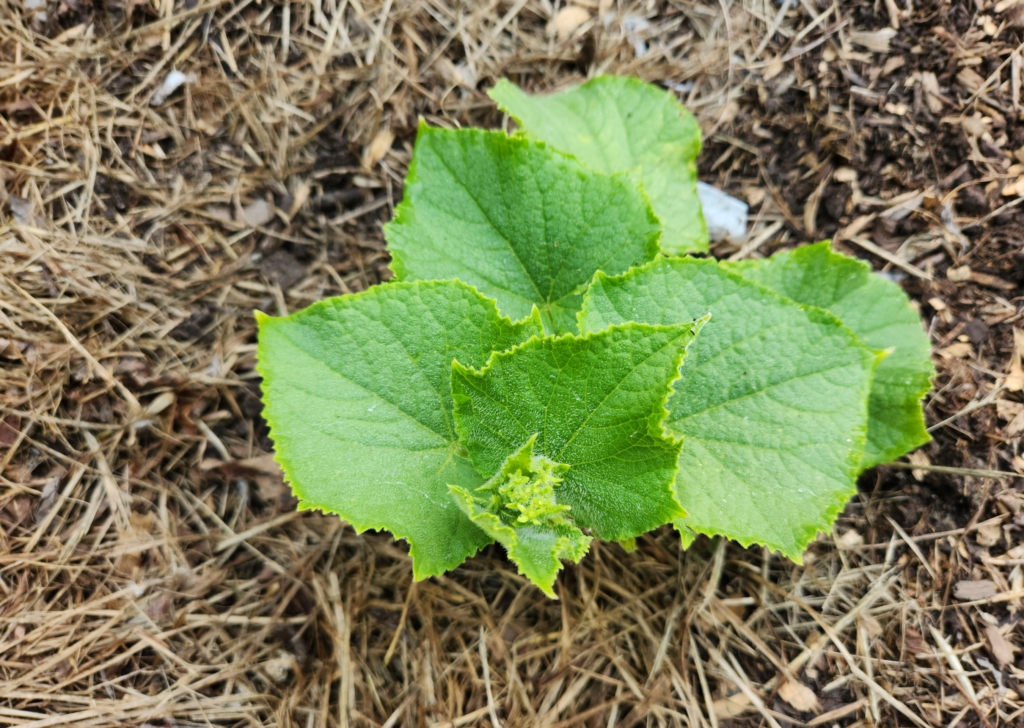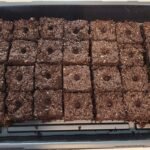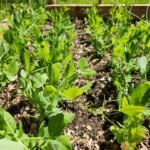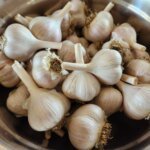If you’re new to gardening or a seasoned gardener, you’ve probably heard of mulching garden beds. Some experienced gardeners mulch regularly and some don’t do it at all. At the end of the day, mulching garden beds won’t make a huge impact, but it does offer valuable benefits if done correctly. There are lots of advantages to mulching your garden beds, however it’s not as simple as just covering them in mulch and calling it a day.
Here’s everything you need to know about why, when, and how to mulch your garden beds, plus common mistakes to avoid!
This post contains affiliate links. If you use these links to buy something we may earn a commission. Thanks.
What is Mulching?
Mulching garden beds involves covering the bare soil with a protective layer of organic material. The covering helps retain moisture, suppress weeds, regulate soil temperature and improve plant health.
Organic mulch decomposes over time and enriches the soil with the nutrients from the organic material. For example, we use chopped leaves, grass clippings and wood chips.
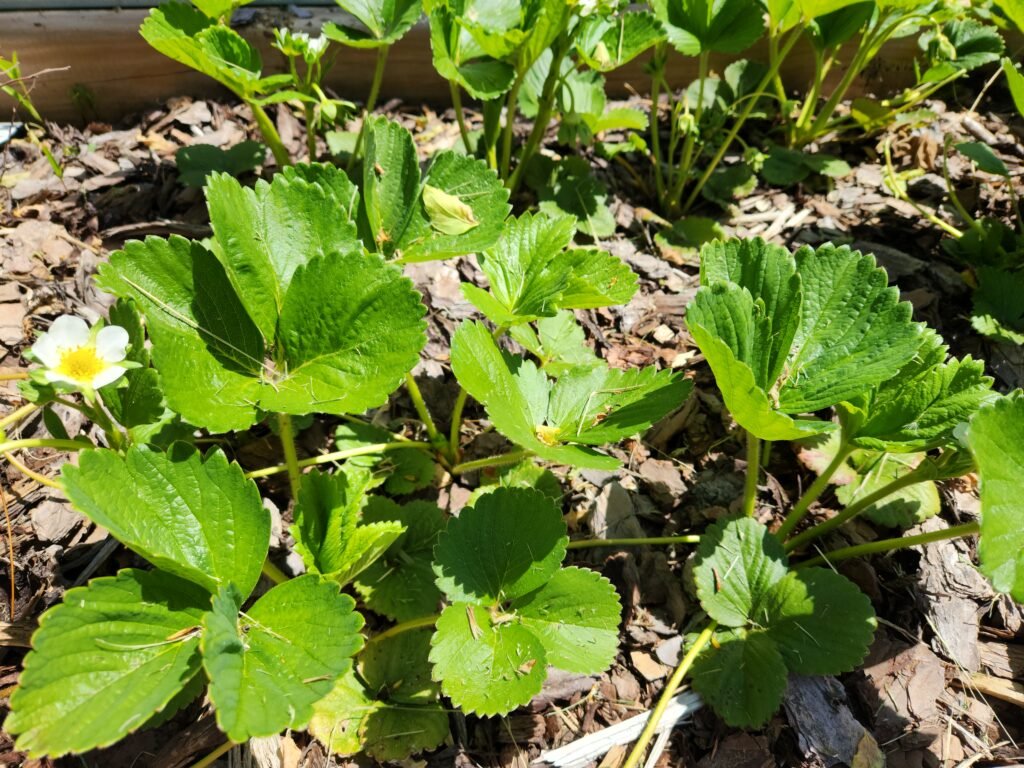
Why Mulch Your Garden Beds?
- Moisture & Temperature Retention: This is a big reason why most gardeners do mulch. It acts as a barrier between the sun and your soil. It prevents excessive evaporation to keep roots hydrated AND regulates the soil temperature during those hot summer days. If you’ve ever touched the topsoil on an unmulched garden bed during a heatwave mid-summer, you’ll understand why this is considered an important step in your gardening journey. Using a soil tester is a good method to check your soil temperature and moisture.
- Providing Valuable Nutrients: The organic material will break down and add nutrients back into the soil, improving fertility and therefore your plants
- Protection from Weeds: Mulching provides a natural barrier from weeds. The mulch doesn’t allow air-borne weeds to land in your soil and start germinating. That’s not to say it doesn’t still happen, but it will reduce your need for weeding.
- Soil Protection from Frost: Similar to how it retains moisture due to its insulating factors, it also protects the soil from frost over the winter.
- Prevents Soil Erosion: Mulching garden or flower beds protects topsoil from being washed away by rain or from wind. Ensuring your beds don’t erode year over year and forcing action to replenish it in a few years. (Where we are right now).
Best Types of Mulch for Specific Plants
Vegetable Gardens
- Straw, grass clippings, chopped leaves.
- Why not wood chips? The heavy chips can prevent growth and is not recommended.
Flower Beds
- Wood chips, bark mulch, chopped leaves, straw, grass clippings.
Fruit Trees
- Pine needles, acidic wood chips. These specifically provide natural acidity to the soil that’s required for optimal growth. Highly recommended.
- Why not other garden mulching coverings? Again, the fruit trees need acidity and they don’t provide that.
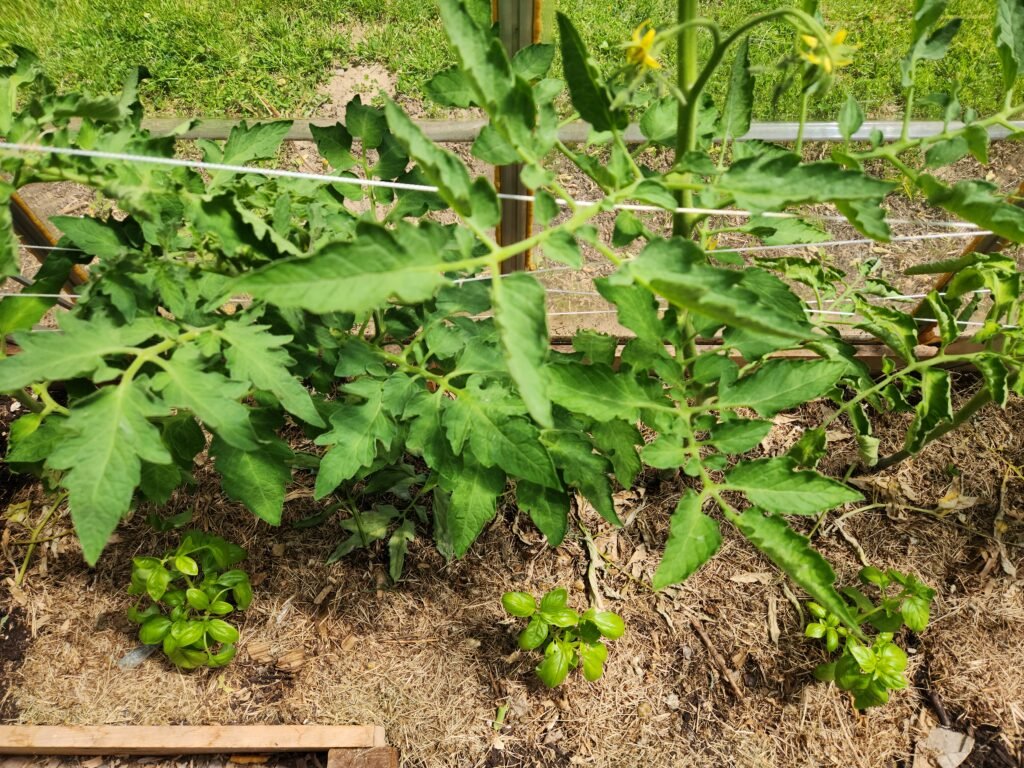
When Should I Mulch The Garden Beds?
There are a few answers to this. Here’s when you should mulch depending on your gardening process.
Mid-Late Spring
- Mulching mid-late spring allows time for the soil to start warming up after the cold winter months. It’s vital not to mulch too early, this can slow down the warming process (again, think about its insulation properties from above).
- Seedlings can push and grow through a thin layer of mulch, but too thick and it will become impenetrable. Learn about what vegetables you can start direct sowing in mid-spring here.
- Helps to keep the soil moist after seedlings have been transplanted or emerged and are strong.
- Maybe most importantly – spring mulching prevents early weed growth!
Mid Summer
- Mulching garden beds in mid-summer helps protect the plant roots from heat stress under the full sun and helps retain moisture from watering. This is the most important aspect of mulching in my opinion.
- Mulching prevents weed growth during the high-germination season.
Early Fall
- Mulching raised beds in the fall helps to insulate the soil for winter dormancy.
- It protects the roots from frost damage and soil eroding.
- Fall mulching also prevents weeds from growing in the early spring before the new mulching process begins.
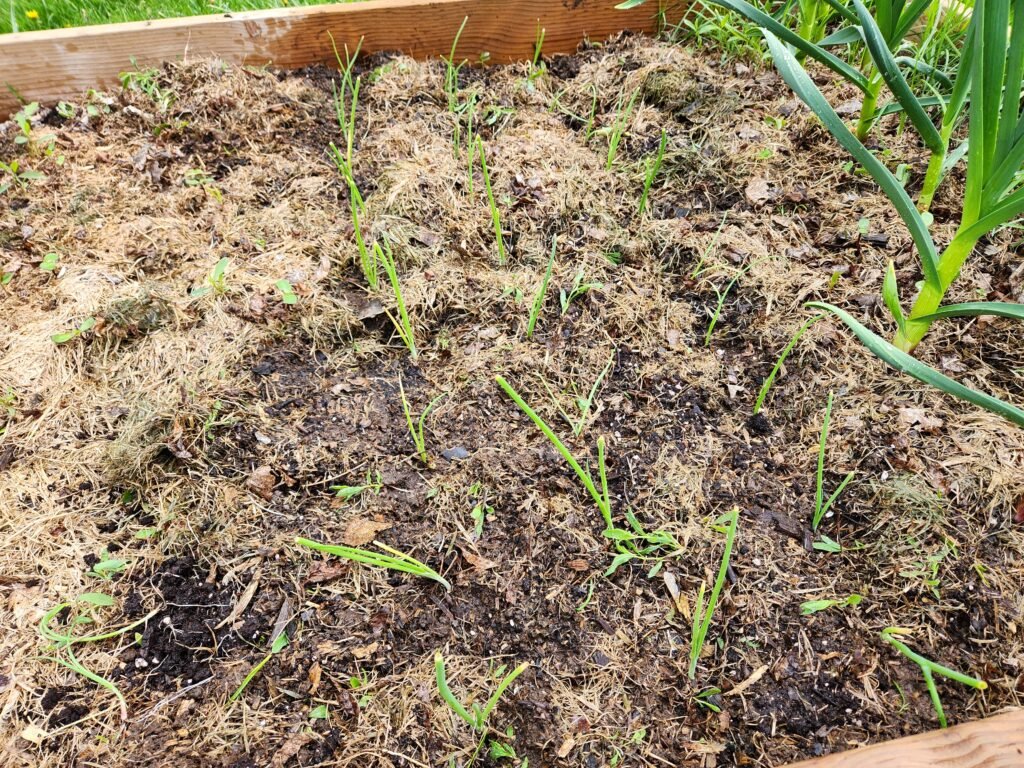
How to Mulch Your Garden Beds Correctly
- Keep mulch away from the plant stems. This will prevent rot and prevent the insects from living in the mulch to inflict damage on the plant.
- Always use organic mulch as it feeds the soil with nutrients when it breaks down.
- Replenish the mulch yearly as it looses it’s effectiveness. Follow the cycle listed above to choose when is the best times to mulch for your garden.
- For freshly planted seedlings, it’s best practice to wait to mulch until the seedling is established, then mulch the soil around the plant but not too close to the stem. Learn about proper transplanting techniques here.
How Much Mulch Do You Need?
- 2-4 inches is ideal for mulching garden beds.
- Heavily mulching can block water and oxygen.
- Sparsely mulching won’t suppress weeds effectively or retain soil moisture.
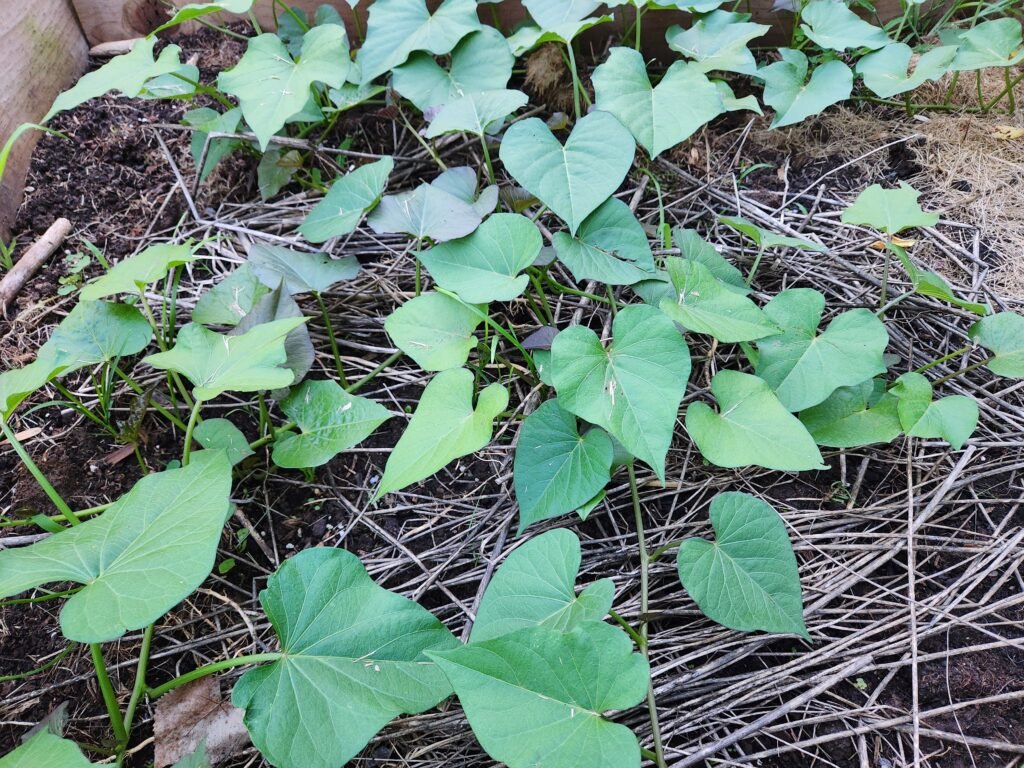
Common Mulching Mistakes & How to Avoid Them
Mulching Too Close to Plants
- Leads to stem rot and pest infestations.
- Solution: Keep mulch 2-3 inches away from stems.
Using the Wrong Mulch
- Dyed mulch and rubber mulch contain chemicals harmful to plants. This is a big no-no!
- Solution: Stick to organic mulches like wood chips, leaves, or straw.
Applying Too Much Mulch
- More than 4 inches can block water and oxygen.
- Solution: Keep mulch 2-4 inches thick for the best results.
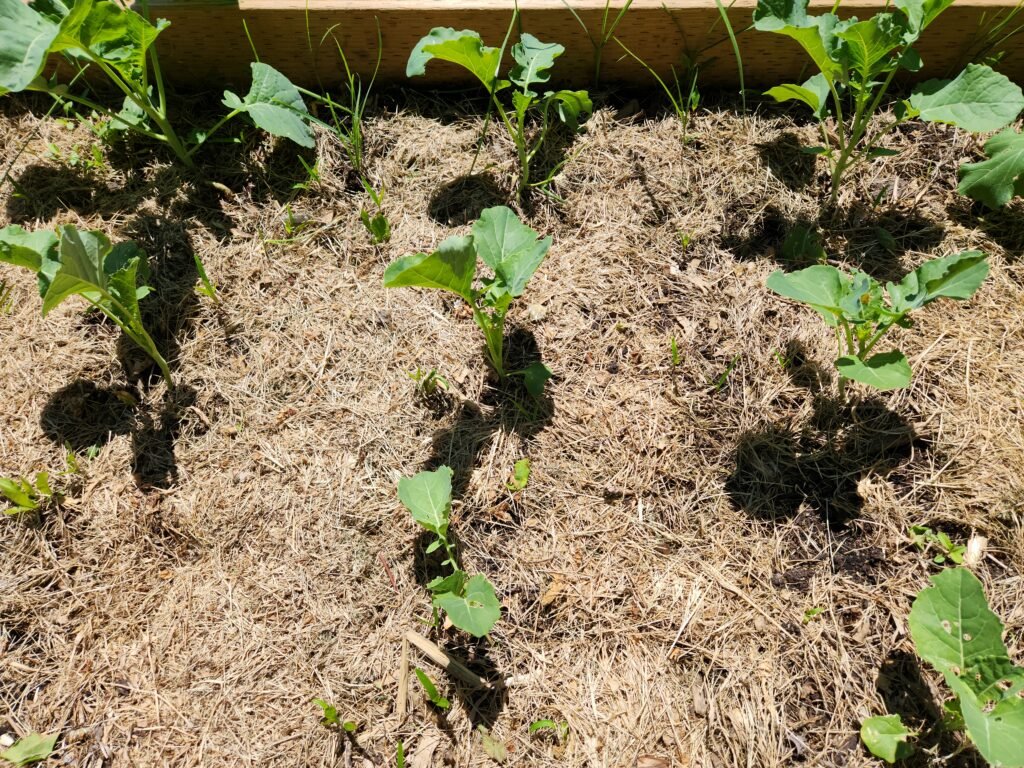
What Should I Use to Mulch My Garden Beds?
Best practices for mulching garden beds include using organic matter – things that decompose. Landscape mulch is not ideal for garden beds as it’s dyed or made of inorganic matter. In fact, I’d go as far as to say landscape mulch shouldn’t ever be used in a natural setting because it’s inorganic.
Best Organic Mulch for Garden Beds:
- Chopped leaves
- Woodchips
- Straw
- Grass clippings (our favorite!)
- Compost
- Manure
- Cardboard
Things NOT to Mulch With:
- Inorganic Mulch (landscape fabric, rubber mulch, dyed mulch)
- Creeping Plants (creeping and spreading plants need room to spread, don’t mulch this)
- DO NOT MULCH OVER WEEDS!
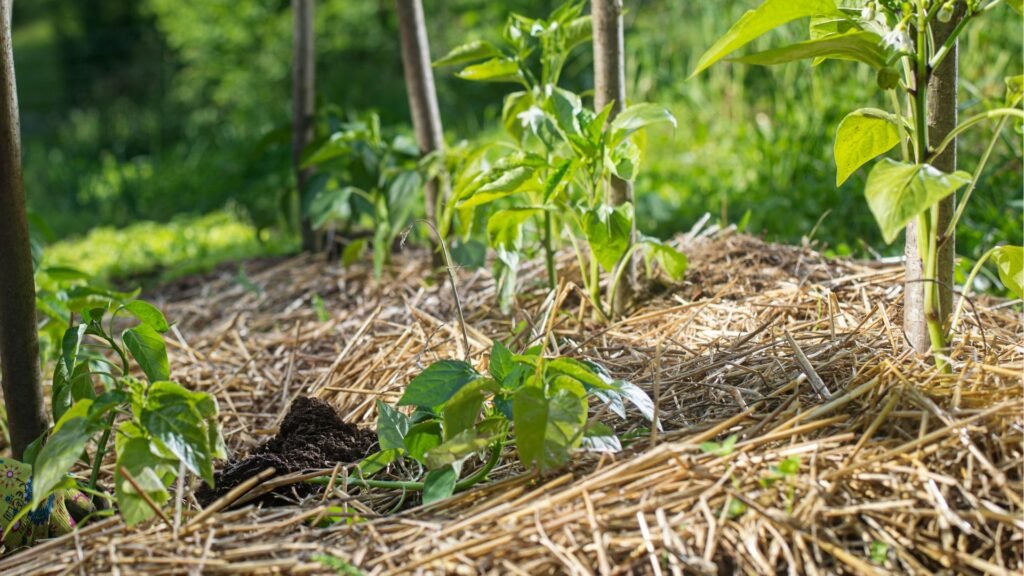
Frequently Asked Questions (FAQ)
If you have to pick and choose which plants to mulch, I would recommend covering your more sensitive crops to overheating and needing water, like tomatoes, brassicas, watermelons, (how to mulch strawberries for winter).
NO! Mulching over weeds allows them to grow back even stronger. First, remove the weed completely, then lay mulch to prevent regrowth.
Yes, we use grass clippings or chopped leaves depending on the season. There are many other options listed above. A popular method is grass clippings and cardboard, great for weed control.
Yes, certain mulches can harbor pests. Some best practices to avoid that includes using cedar mulch and avoiding excessive moisture.
Final Thoughts: Will You Start Mulching Garden Beds This Season?
We hope you enjoyed this in-depth article mulching garden beds. If you did, make sure you check out the other content on growing guides, seed saving guides, recipes, medicinal herb hub and more. We are growing our website with more articles all the time, and we invite you to grow with us. Whether you’re a seasoned gardener or just starting out, it can be an enriching experience. If you have any questions or want to share your mulching experiences, feel free to leave a comment below. Happy gardening!

